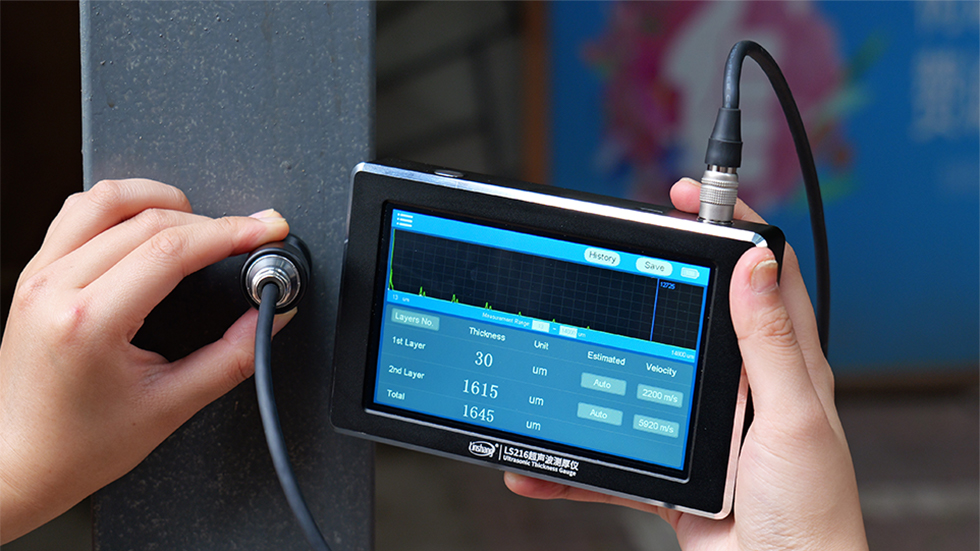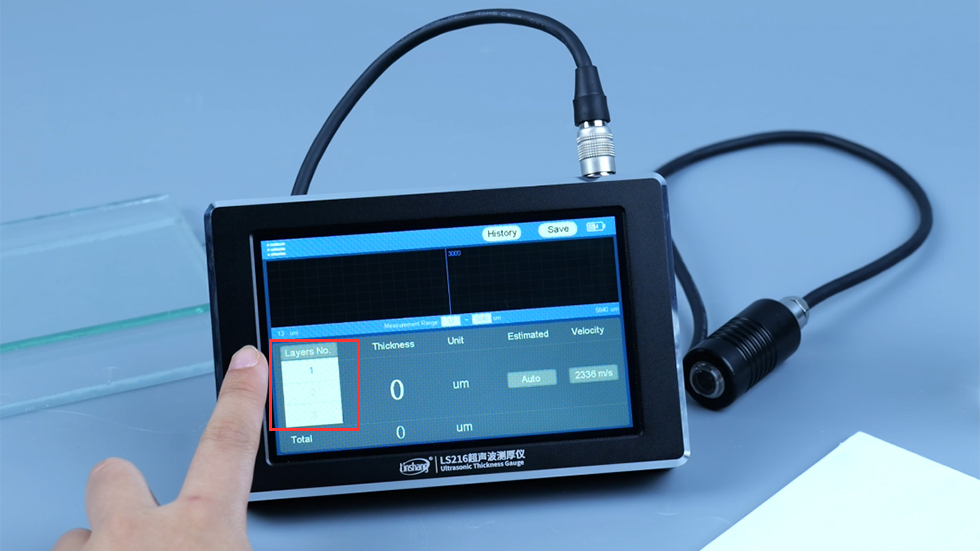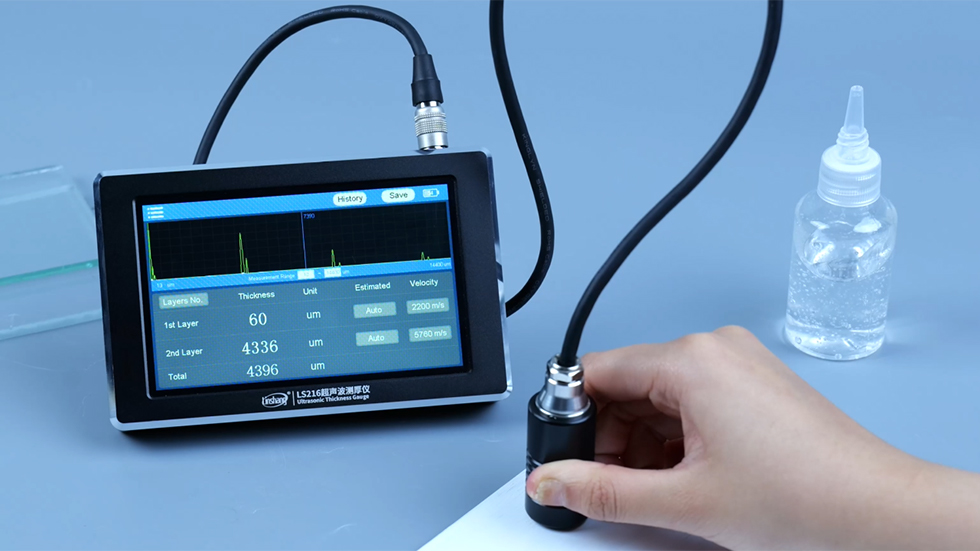Linshang LS216 Ultrasonic Thickness Gauge: The Ideal Choice for Multi-Layer Thickness Measurement
In industries such as manufacturing, packaging, composite materials, and coating control, multi-layer materials are widely used. These materials are often composed of different functional layers—for example, plastic film + metal foil, or coating + primer + substrate. The thickness of each layer directly impacts product performance, durability, and production costs. Therefore, non-destructively and accurately measuring the thickness of each layer is key to achieving refined quality control. Traditional testing methods often fall short of this requirement, while ultrasonic thickness gauges offer a new solution for multi-layer measurement. This article introduces the LS216 High Precision Ultrasonic Thickness Gauge, independently developed by Linshang Technology, and explores its advantages and applications in multi-layer thickness detection.

Why Measure the Thickness of Multi-Layer Materials?
In both production and quality inspection processes, many materials are not single-layered but consist of two or even three different materials. Examples include:
Multi-layer composite films used in food and pharmaceutical packaging
Industrial plates with anti-corrosion layer + adhesive layer + substrate structure
Coatings on metal components including topcoat + primer + metal layer
The performance of these multi-layer structures often depends on the thickness ratio of each layer. If one layer is too thin, it may compromise functionality; if too thick, it can lead to resource waste and increased costs. Therefore, precise, fast, and non-destructive measurement of each individual layer is critical for cost control and quality assurance.
Challenges and Limitations of Traditional Thickness Measurement Methods
Traditional methods for measuring multi-layer materials include slicing, microscopic analysis, and weight-based calculations. However, these approaches face several major issues:
-
Destructive Testing
Requires cutting and separating samples, which destroys the material structure and prevents re-use—inefficient for production use.
-
Complex and Time-Consuming
Sample preparation is complicated, demands high operator skill, and is unsuitable for batch inspections or in-line production testing.
-
Inability to Measure Individual Layers Separately
Particularly in structures where the middle layer is not visible, traditional methods can only determine the total thickness, making it difficult to assess compliance with specifications.
LS216 Ultrasonic Thickness Gauge: Purpose-Built for Multi-Layer Measurement
To address these challenges, Linshang has developed the LS216 Ultrasonic Thickness Gauge, which uses advanced ultrasonic pulse-echo principles to measure material thickness. It offers several core advantages:
-
Simultaneous Measurement of Three Layers
The LS216 can detect up to three different material interfaces and display the thickness of each layer independently, enabling true multi-layer analysis.
-
High-Speed ADC Technology with 1μm Resolution
Capable of measuring micron-level thin layers, ideal for industries with high precision demands such as electronics, film materials, and aerospace.
-
High-Definition IPS Color Display
Equipped with a color touchscreen that ensures clear readings even in low-light environments. A movable blue cursor helps users visualize echo data from different positions.
-
Built-in Sound Velocities for 20+ Materials
Includes preset sound velocities for over 20 common materials and supports manual input for each layer’s sound velocity, adapting to plastics, coatings, metals, rubber, and more.
-
Automatic Gain Adjustment
The LS216 automatically selects the appropriate gain (signal amplification) based on material type and thickness, ensuring optimal signal strength and measurement accuracy.
-
Range and Estimated Thickness Settings
Users can set upper/lower measurement ranges and input estimated material thickness to filter out echo interference and improve accuracy in coating layer measurements.

LS216 Ultrasonic Thickness Gauge Layer Setting

LS216 Ultrasonic Thickness Gauge Sound Velocity Settings

Apply Coupling Agent

LS216 Ultrasonic Thickness Gauge Testing Multi-Layer Materials
How to Measure Multi-Layer Material Thickness with the LS216 Ultrasonic Thickness Gauge
Using the LS216 for multi-layer measurements is simple and efficient. Just follow these steps:
-
Set the Number of Layers
Choose the correct number of layers based on the material structure.
-
Set Sound Velocities
Input the sound velocity for each layer—for example, 2500 m/s for coating, 1800 m/s for adhesive, and 5900 m/s for metal substrate. LS216 allows velocity settings for each individual layer to ensure measurement precision.
-
Apply Coupling Agent
Apply sufficient coupling agent to the test surface to eliminate air gaps and allow effective ultrasonic wave transmission.
-
Start Measuring
Press the probe vertically and firmly onto the measurement point. Once the test is complete, the screen will display the thickness of each layer and the total thickness of the material.
With its excellent multi-layer measuring capabilities, micron-level precision, and user-friendly design, the Linshang LS216 High Precision Ultrasonic Thickness Gauge has become the ideal choice for enterprises in material R&D and quality control. If you’re facing challenges in measuring multi-layer material thickness, feel free to contact us to learn more about the LS216 and our tailored testing solutions!